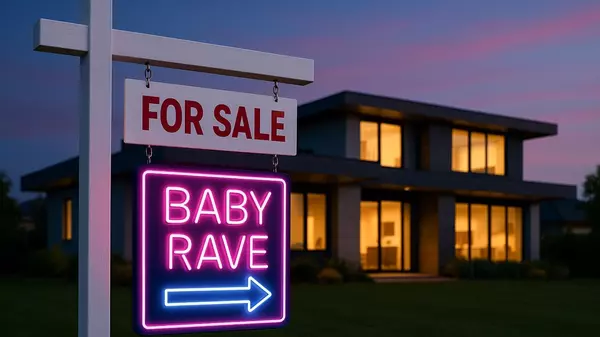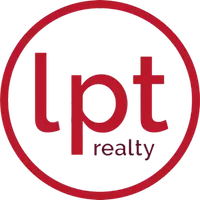How the New $100K H-1B Fee Could Hit Housing Demand in Key U.S. Markets
Living in the U.S. just got more expensive if you're on a certain visa. President Donald Trump signed a proclamation on Sept. 18 requiring companies to pay a new $100,000 fee on H-1B visas for highly skilled workers.
"The H-1B nonimmigrant visa program was created to bring temporary workers into the United States to perform additive, high-skilled functions, but it has been deliberately exploited to replace, rather than supplement, American workers with lower-paid, lower-skilled labor," said the announcement.
This announcement affects a majority of the highly skilled workers in the U.S. on visas—many in computer- and tech-related jobs.
"The proclamation, still vague in its details, has created fresh uncertainty for both new and existing H‑1B workers—and potentially for other temporary work visas like L and O—influencing expectations and behavior," says Jiayi Xu, an economist with Realtor.com®.
There are an estimated 730,000 H-1B holders in the U.S., according to FWD.us, a bipartisan social welfare organization, and many are well-paid and highly educated. In 2023, FWD.us says the median wage for H-1B workers was $118,000.
These workers and their families contribute to the housing economy, and now the uncertainty that surrounds the cost of the new fee for an immigration visa can affect home purchases and rentals.

Which states are affected
The states affected the most would be financial and tech capitals such as New York and New Jersey; California; Washington; Virginia and Washington, DC; and Texas.
According to the USCIS H-1B Employer Data Hub, the top five metros for approved H-1B visas per 100 workers in 2023 were New York City; Chicago; College Station, TX; Irving, TX; and Richardson, TX.
"There will be negative impacts in smaller cities where large employers file a lot of applications," Eric Finnigan, vice president of demographics research at John Burns Real Estate Consulting, tells Realtor.com.
He notes that almost all of the approvals in College Station were for one company—Cognizant—while in Richardson, they almost all went to Infosys.
"Many foreign workers may delay homeownership and remain in the rental market longer," Xu says. "Given their higher incomes, this would particularly boost demand for high-end rentals, adding upward pressure on rents.
"The impact will be most pronounced in markets with constrained supply and sizable foreign worker populations, such as New York City, where rents are already at record highs."
In August, the median asking rent in the city was $2,946.
"For H-1B holders or other temp-work visa holders who still plan to buy, the uncertain policy environment—combined with an overall tightening immigration atmosphere—can make financing more challenging, as lenders may demand larger down payments or impose higher mortgage rates," explains Xu.
Confusion reigns
The news of an enormous surge in a visa sponsorship fee that had previously cost a few grand has many employees concerned.
White House press secretary Karoline Leavitt wrote on X: "1.) This is NOT an annual fee. It’s a one-time fee that applies only to the petition. 2.) Those who already hold H-1B visas and are currently outside of the country right now will NOT be charged $100,000 to re-enter. 3.) This applies only to new visas, not renewals, and not current visa holders."
Leavitt said that the charge would go into effect on the next upcoming lottery cycle, predicted to begin in March 2026.
But Nicole Gunara, principal immigration attorney at Manifest Law, says things aren't as simple as the social media clarifications make them seem.
Formal policy guidelines issued by the relevant governmental agencies, U.S. Citizenship and Immigration Services and Customs and Border Protection, were a bit more vague.
Gunara tells Realtor.com that the definition of "renewal" on the agencies' FAQs wasn't clear, and that the new fee could potentially apply to current visa holders who change employers.
"If the renewal isn't for an extension with the same employer, you can make the assumption that there could be a $100,000 fee assessed until further guidance is issued," she says.
She also says she hasn't seen this much large-scale immigration confusion since the travel bans announced in early 2020 during the COVID-19 pandemic.
"We've had a lot of panicked calls," she says. "Unless you're somebody who lives and breathes this stuff, it's really hard to understand these defined terms."
What it could cost
Amazon and its cloud-computing unit, AWS, received approval for more than 12,000 H-1B visas in the first half of 2025. Microsoft and Meta had more than 5,000 H-1B visa approvals each, according to Reuters.
If the new fee applies to those current visa holders, it could cost Amazon alone well over a billion dollars.
"It's an evolving situation," says Gunara. "The first reaction was panic, but now it's waiting with bated breath for further clarification or guidance."
She predicts that corporations that make heavy use of H-1B visas will either pivot to other types of visas or will start applying pressure to the "powers that be" behind the scenes.
Meanwhile, the Wall Street Journal reports that on Thursday, U.S. lawmakers asked major companies, such as Amazon and Apple, to explain why they're hiring thousands of foreign workers, but laying off thousands of Americans.
Other pathways to residency
International residence and citizenship advisory specialists Henley & Partners points out that the crackdown on H-1B visas also saw the administration opening new investment-based pathways.
"The initiatives look set to reshape the US immigration landscape by limiting traditional employer-sponsored options while introducing new donation-based pathways," said the firm in a release.
There's the Gold Card Executive Order, which will require a $1 million gift by individuals, or a $2 million gift by corporate sponsors, with expedited approvals for applicants who pass rigorous preclearance checks.
Then there's the Platinum Card Proposal, which requires a $5 million contribution that will allow recipients to spend up to 270 days in the country annually without being subject to U.S. taxation on foreign income.
The gold and platinum visas, unlike the EB-5 visa program, which has been around since 1990, do not have any job creation requirements.
As for whether these new pathways will attract high net worth individuals, including the world's centimillionaires (those who have at least $100 million) and billionaires, to the States remains to be seen.
"These announcements reflect an important moment in U.S. immigration policy," says Juerg Steffen, CEO at Henley & Partners. "While the details of the new pathways are still evolving, they demonstrate an openness to innovative approaches."
Categories
Recent Posts










GET MORE INFORMATION

